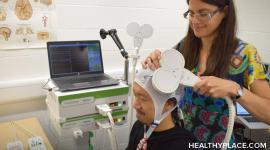Cognitive Behavioral Therapy (CBT): Definition, Techniques, Examples

Cognitive behavioral therapy (CBT) aims to change how people think and behave. Unlike other talking therapies, CBT is focused on the present moment as well as developing strategies for the future rather than looking to the past. Cognitive behavioral therapy can effectively treat many different conditions and disorders, such as anxiety, phobias, stress, obsessive-compulsive disorder and posttraumatic stress. So what does CBT involve and how does it help?
What Does Cognitive Behavioral Therapy Involve?
Cognitive behavioral therapy can be provided in groups, on a one-to-one therapy basis, or even individuals with the use of books and self-help aids. CBT typically involves meeting with a therapist weekly for around 5-20 sessions. Initially, you will be assessed to see if CBT is right for you and to discuss the intended outcome of your therapy.
Although you will be asked questions about your life and background, cognitive behavioral techniques focus on the here and now rather than examining the past. Therefore, much of your treatment will be solution-focused, and you will decide which issues you want to address.
CBT is different depending on the individual and their reason for therapy. In most cases, however, the basic framework is the same. With the help of your therapist, you will work to break each problem down into its separate parts. You may be asked to keep a diary or log of your thoughts and behaviors to help your therapist identify patterns that need adjusting. You will look at thoughts and feelings to see whether they are evidence-based and whether they are helpful or unhelpful. Your therapist will then work on ways to help you reframe troubling thoughts and change unwanted behaviors. You may be given "homework" so you can put this theory into practice.
Cognitive Behavioral Therapy Techniques: How They Help?
Cognitive behavioral techniques can be applied to a number of different mental health conditions and disorders. Here are some of the techniques commonly used in CBT:
Mood tracking or journaling
Journaling as a therapeutic technique can be applied to various different types of therapy. Keeping a CBT journal, however, is slightly different. Your therapist will advise you which thoughts and feelings to record in your journal, and he or she may want you to go into the detail about the mood or thought, its source, how you reacted and other factors. This method can help you identify problematic thoughts and behaviors, so you can work to change them.
Cognitive unraveling and restructuring
Unraveling cognitive distortions is the primary technique used in CBT. It helps you identify negative thought patterns or cycles (such as “catastrophizing” or “black and white thinking”) so that you can challenge them. Many of these cognitive distortions are automatic, so you may not be aware of them until you begin CBT. Cognitive restructuring involves delving deeper into these negative thought cycles and behaviors, so you can consider how your beliefs may be informing them. You can then start to restructure your assumptions and challenge the cognitive distortions.
Exposure and response prevention
This cognitive behavioral therapy technique is especially effective for people who suffer from obsessive-compulsive disorder (OCD). "Exposure" means exposing yourself to the trigger of your compulsive behavior while doing your best to prevent the response that goes with it.
To use a cliched example, a person with OCD may believe that if they walk on a crack in the street, something bad will happen unless they count back from 10. The exposure and response prevention technique would encourage that person to expose themselves to a cracked sidewalk, to step on the crack and refrain from counting back from 10 – all with the therapist’s guidance. Over time, this helps patients with OCD break long-held habits and destructive thought cycles.
Although cognitive behavioral therapy can be extremely effective, it is not a quick fix – nor is CBT for everyone. A good therapist will help you make the most of your CBT sessions, so don't be afraid to meet with a few practitioners before deciding on the one you like.
APA Reference
Smith, E.
(2019, August 19). Cognitive Behavioral Therapy (CBT): Definition, Techniques, Examples, HealthyPlace. Retrieved
on 2024, November 20 from https://www.healthyplace.com/other-info/mental-illness-overview/cognitive-behavioral-therapy-cbt-definition-techniques-examples



